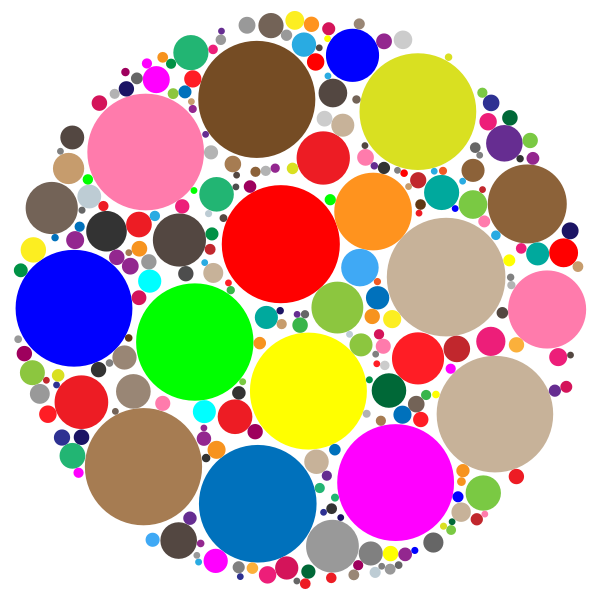Hmm...that circle with squares and more circles in it looks like my grandma's coffee table, minus all the tea...
We could just use a ruler, and measure my grandma's coffee table in the matter of a few seconds, but instead, we have decided to spend 10 minutes solving a math problem. Great 👍.
To find the area of the circle, we need to find the radius. And the radius of the big circle is just a simple way to say the diagonal of the square, which can be found using the diameter of the smaller circle. So many circles.

(ain't them pretty?)
Anyways, we first need to find the radius of the small circle. This will be the side lengths of the square, which will help us find the diagonal.
RADIUS OF SMALL CIRCLE:
Ever wonder what the area of the above circle is? Neither did I.
But, the general formula for a circle's area is:
A = r2 pi
Lovely. How does that help us? Well, it just straight out gave away that our radius was 5! (Don't believe me? Try it yourself)
Now, we can go on to the diagonal.
DIAGONAL:
Pythagorean, Pythagorean, Pythagorean. You thought you were done with it once you passed Algebra 1, but it always will haunt you, and your future plans...
In other words, we care looking for:
sqrt(100 + 100) = sqrt(200)
This is 10sqrt(2).
AREA OF BIG CIRCLE:
Finally! What we have gotten what we have been looking for....or at least started to search for it.
The radius of the circle is 5sqrt(2) (which is half of the diagonal)
Plug it into the area formula:
5sqrt(2)2 pi = 50pi
There, an answer. Though it still would have been much easier if we just measured my grandma's coffee table...
:)
EDIT: hmmm...this is not possible....but I don't see my mistake...
EDIT 2: thanks to asinus and guest, I was able to detect my mistake!